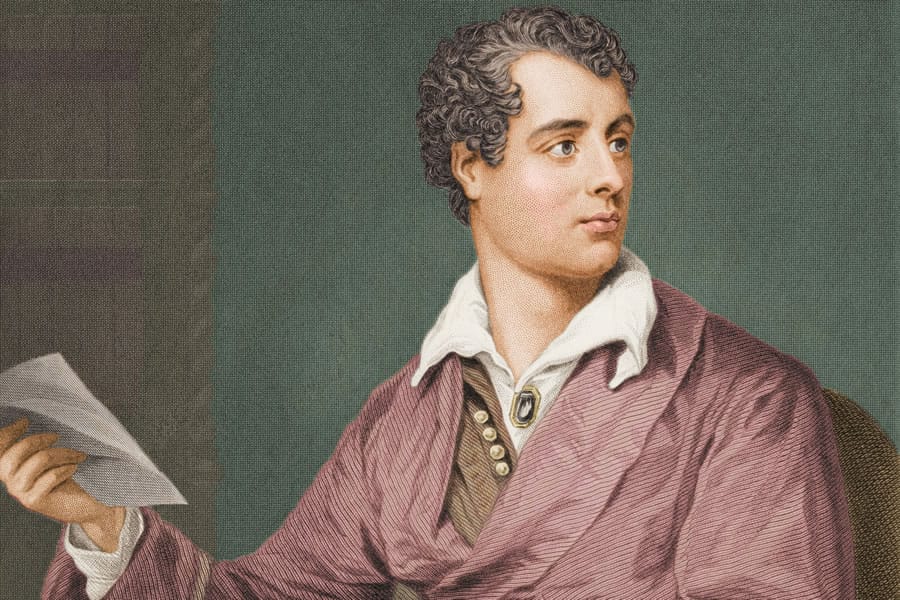
Unconscious and Sublime Essay
Creativity of great English poet Byron has become history of the world literature as the outstanding art phenomenon connected with an epoch of romanticism. Arisen in the Western Europe in the end of XVIII – the beginning of XIX century the new direction in art was reaction to the French revolution and the enlightenment connected with it.
The ardent defender of national-liberation movement of the people, the exposer of tyranny and a policy of aggressive wars, Byron became one of leading initiators of a progressive direction in romanticism. The innovative spirit of poetry of Byron, his art method of the romanticist of new type have been picked up and developed by the subsequent generations of poets and writers of different national literatures.
Whatever surprising was on the beauty the nature and majestic ancient culture of these southern countries, Byron did not perceive them out of a life of the people, their occupying.
Convicting false and misanthropic theories, Byron confirms belief in reason of the person. The poet believes, that thanks to development of a science people will be masters of the nature “and on the moon they will send machines!”
Shelley at all did not divide that idolatrous relation to Napoleon which we see at Byron and almost at all or, at least, at many outstanding poets of that time. He saw in it mainly the murderer of republic. He, however, recognizes to a certain extent the sizes of its person in later poem the Lines written at news about death of Napoleon, being one of best his pantheistic poems.
When Shelley describes the nature or the person, a touch of its brush is easy and airy. He is true type of the impressionist. Its poetry is gentle, as Schuman’s music and as the most gentle lyrical waves of music of Wagner and the same as Schuman and Wagner, he excites soul with the mysterious tenderness. Its poetry can be compared also to Botticelli’s painting and with painting English preraphaelists, Dante Rossetti and Bern-Johns.
Shelley not always tested such strong love to the Nature what its creativity of later period is noted. In an early youth he was so is grasped by psychological, philosophical and social questions, that the kind of picturesque mountains and in general a kind of beautiful places of the Nature left its cold.
Keats has created the theory of art, K-paradise is the most consecutive theory of art for art. Proving and protecting it, he has occupied a hostile stand not only in relation to a policy or religion, but also to a science that has displeased even among his friends. Keats e.g. complains, that the science has lowered to ordinary life a mysterious rainbow, cut off wings at angels, has deprived of air of mysterious inhabitants of vaults, gnomes etc. Under its theory art should be a beauty embodiment, instead of the tool of a policy, a science or religion. The poet not the teacher, not the leader, he should not participate in public struggle: the poet first of all the creator. He has expressed the understanding of art by the short formula: « The beauty is true, the true is beauty; here everything, that we know and that we should know ». He hotly convinced modern to it poets to refuse a social orientation in creativity. Itself Keats strictly adhered to the theory, aspiring to create« monuments of eternal beauty », free from« trifles of topic of the day », from any reflexion of a public life of its time.
Keats is the romanticist, but deeply distinct from modern to it of romanticists. He did not leave in the Middle Ages in search of nightmares and horrors, did not leave in exotic in search of the extraordinary. He everywhere searched only for beauty and found it mostly in ancient Greece, free and original treatment of classical plots causing anger and indignation of supporters of classicism.
Keats poetry’s got antique pantheistic by naturalism. Keats the maximum objectivism in creativity set as the purpose, and he is really objective even in the lyric poetry. The basic line of creativity Keats is a cult of self-sufficing art. Through all its products the principle «art above a life» is gone through. Prevalence of feeling over reason, a pleasure and grief combination, nonruling reconciliation with the validity, humility to fate and calm search in «silent grief», pleasures – in suffering does К by the earliest predecessor preraphaelists and especially bourgeois depressive aestheticism of type of Baudelaire, Oscar Uajld, etc. He is close to our symbolists of the end XIX and the beginnings of XX centuries
This groundlessness is characteristic and for К, and he leaves from not clear, chaotic validity for it in the world of absolute beauty; its searches of calm in grief, in suffering, etc., the desire «silently to die» – result of full feebleness of a class, impossibility for it not only to win, but also to struggle.

